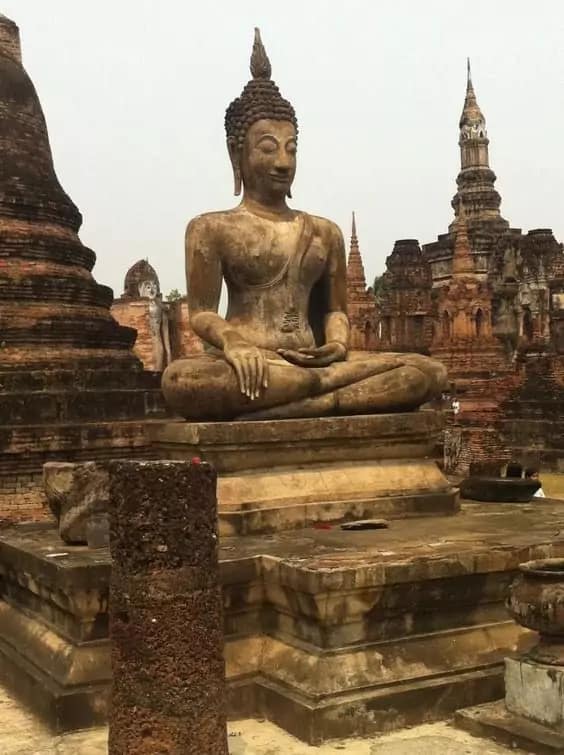
The Breach of Sila
To undertake the precepts is to make a determination to live in harmony with them, not to ensure that one will never break them. Despite our determination it sometimes happens that due to carelessness or the force of our conditioning by the defilements we act contrary to the precepts. The question thus comes up as to what to do in such cases.
One thing we should not do if we break a precept is to let ourselves become ridden by guilt and self-contempt. Until we reach the planes of liberation it is to be expected that the defilements can crop up from time to time and motivate unwholesome actions. Feelings of guilt and self-condemnation do nothing to help the matter but only make things worse by piling on an overlay of self-aversion. A sense of shame and moral scrupulousness are central to maintaining the precepts but they should not be allowed to become entangled in the coils of guilt.
When a breach of the precepts takes place there are several methods of making amends. One method used by monks to gain exoneration in regard to infringements on the monastic rules is confession. For certain classes of monastic offenses a monk can gain clearance simply by confessing his transgression to another monk. Perhaps with suitable modifications the same procedure could be applied by the laity, at least with regard to more serious violations. Thus if there are a number of lay people who are earnestly intent on following the path, and one falls into a breach of a precept, he can confess his lapse to a Dhamma friend, or, if one is not available, he can confess it privately before an image of the Buddha. It must be stressed, however, that confession does not aim at gaining absolution. No one is offended by the ethical lapse, nor is there anyone to grant forgiveness. Also, confession does not abrogate the kamma acquired by the transgression. The kamma has been generated by the deed and will produce its due effect if it gains the opportunity. The basic purpose of confession is to clear the mind of the remorse bearing upon it as a consequence of the breach. Confession especially helps to prevent the concealment of the lapse, a subtle maneuver of the ego used to bolster its pride in its own imagined perfection.
Another method of making amends is by retaking the five precepts, reciting each precept in turn either in the presence of a monk or before an image of the Buddha. This new undertaking of the precepts can be reinforced by a third measure, namely, making a strong determination not to fall into the same transgression again in the future. Having applied these three methods one can then perform more virtuous actions as a way of building up good kamma to counteract the unwholesome kamma acquired through the breach of the precept. Kamma tends to produce its due result and if this tendency is sufficiently strong there is nothing we can do to blot it out. However, kamma does not come to fruition always as a matter of strict necessity. Kammic tendencies push and tug with one another in complex patterns of relationship. Some tend to reinforce the results of others, some to weaken the results, some to obstruct the results. If we build up wholesome kamma through virtuous actions, this pure kamma can inhibit the unwholesome kamma and prevent it from reaching fruition. There is no guarantee that it will do so, since kamma is a living process, not a mechanical one. But the tendencies in the process can be understood, and since one such tendency is for the wholesome to counteract the unwholesome and hinder their undesired results, a helpful power in overcoming the effects of breaking the precepts is the performance of virtuous actions.
The Similes for Sila
The texts illustrate the qualities of sila with numerous similes, but as with the three refuges we must again limit ourselves to only a few. Sila is compared to a stream of clear water, because it can wash off the stains of wrong actions which can never be removed by the waters of all other rivers. Sila is like sandalwood, because it can remove the fever of the defilements just as sandalwood (according to ancient Indian belief) can be used to allay bodily fever. Again sila is like an ornament made of precious jewels because it adorns the person who wears it. It is like a perfume because it gives off a pleasant scent, the “scent of virtue,” which unlike ordinary perfume travels even against the wind. It is like moonbeams because it cools off the heat of passion as the moon cools off the heat of the day. And sila is like a staircase because it leads upwards by degrees — to higher states of future existence in the fortunate realms, to the higher planes of concentration and wisdom, to the supernormal powers, to the paths and fruits of liberation, and finally to the highest goal, the attainment of nibbana.
Source : “Going for Refuge & Taking the Precepts”, by Bhikkhu Bodhi. Access to Insight (BCBS Edition), 1 December 2013, http://www.accesstoinsight.org/lib/authors/bodhi/wheel282.html .